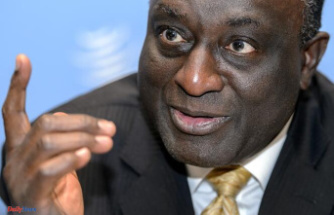WHO and the UN have today announced a joint global vaccination strategy against COVID-19 for 2022 in which, among other things, it advocates that countries that have achieved a high percentage of immunization of the population and still have doses Remaining derive part of them to the countries where vaccination rates are still very low before continuing vaccinating their population.
The goal is to reach 40% of the population vaccinated throughout the world before it ended 2021 and 70% of the world population in 2022, in order to end what qualifies a two-speed pandemic, in which the Population of the poorest countries is still at risk while that of the richest with high percentages of people vaccinated have already achieved an important protection.
The Director General of the WHO, Tedros ADHANOM GHEBRAYESUS recalls the target marked by his organization that 10% of the population of each country would have received the vaccine for the end of last September, but points out that on that date 56 countries still not He had been able to do, especially in Africa and the Middle East. Half of these have only vaccinated 2% of its population.
"Science has played its role well by developing powerful tools that save lives faster than in any other epidemic outbreak of history, but the concentration of those tools in a few has led to a global catastrophe, with the rich protected while the poor They remain exposed to a deadly virus. We can still achieve the objectives established for this and next year, but it will require a high level of political commitment, action and cooperation beyond what we have seen so far, "said the general director of the WHO.
"Without a coordinated and equitable approach, the reduction of cases in any of the countries will not be sustainable over time. For the sake of all, we must urgently get all countries to reach high levels of coverage," Antonio has pointed out. GUTERRES, UN Secretary General.
Specifically, the objectives proposed by the two international organizations, first require the vaccination of all the elders, health professionals and high-risk groups of any age in all countries and then extend it to the rest of the adults and, finally to the teenagers.
Vaccination of 70% of the world population requires 11,000 million dose; At the end of September, about 6,000 million had been administered around the world. The worldwide vaccine production reaches about 1,500 million doses per month, with which from the supply point of view there are sufficient vaccines to achieve the aforementioned objective of global immunization if an equitable distribution is guaranteed, according to WHO. Important quantities have been invested to achieve most of the doses required in middle and low income countries through contracts via covax and avat (African Vaccine Acquisition Trust).
The strategy marks a necessary response from all countries, which should update its vaccination objectives for an adequate reprogramming of the production and distribution of vaccines, and develop financial and organizational resources for internal planning and external support.
In particular, countries with high coverage rates would have to change their vaccination schemes to achieve via covax and avat coverage in countries that still need it to reach the goal of 70% of the vaccinated world population. Vaccine producing countries should allow the free movement of vaccines and raw materials, as well as the diversification of that production.
Finally, WHO and UN urge vaccine manufacturers to prioritize and urgently complete contracts with Covax and Avat, and actively work with countries with high coverage that have acquired a high volume of vaccines so that they are also Do it, and commit to sharing knowledge and facilitating the transfer of technologies more quickly, as well as offering non-exclusive licenses.
Date Of Update: 09 October 2021, 02:30











